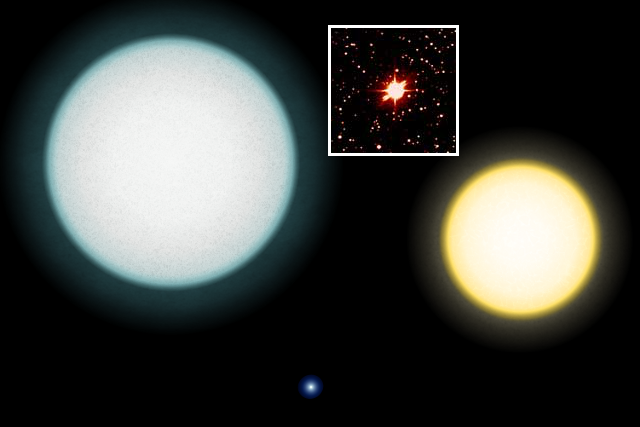Earth-shattering kabooms: A supernova in our lifetimes?
Ars Technica » Scientific Method 2013-03-28
While astronomers and science fiction fans often wish otherwise, there are times when the vastness of space works to our advantage, simply because it keeps us out of harm's way. For example: supernova explosions are some of the most violent events in the cosmos, sometimes outshining their entire host galaxy. The supernova appearing in the sky on July 4, 1054 was brighter than Venus; its remnant, the Crab Nebula, is still an intense X-ray source. However, the star that went kaboom was about 6,500 light-years away from Earth, meaning our planet wasn't in any danger.
No star that will go supernova in the foreseeable future is close enough to the Solar System to pose a risk to us. But what stars might be close enough to provide us with a lovely show—and a great example for study? Here are just a few, all within the Milky Way, with at least a slim chance of going boom before humans go extinct from other causes.
IK Pegasi
Currently the closest supernova candidate, IK Pegasi is a mere 150 light-years away from the Solar System. It's actually a binary system, consisting of a normal star about 1.7 times the mass of the Sun locked in mutual orbit with a white dwarf. While a low-mass star like that isn't big enough to explode on its own (the minimum supernova mass is 8 times the Sun's), its companion changes the situation. White dwarfs are the remains of Sun-like stars, but they have a maximum mass—the Chandrasekhar limit—beyond which they explode. When the primary star in IK Pegasi runs out of nuclear fuel in a few million years' time, it will expand enough that it transfers gas to its companion. Eventually, enough gas will transfer to the white dwarf and the whole system will explode as a type Ia supernova.A similar binary system, Sirius, is even closer at 8.6 light-years' distance. However, it's much farther from death, and may not even die as a type Ia supernova.This is an artist's impression with the Sun at right for comparison. The inset is an actual image of the primary star (the white dwarf is too small to see).
8 more images in gallery
If you want a list of all stars within 1,000 light-years that could potentially go supernova, check out Phil Plait's book, Death from the Skies. He doesn't list prognoses for the time death or include type Ia candidates, but the book has a lot more info if you want to have some fun.
Read on Ars Technica | Comments
